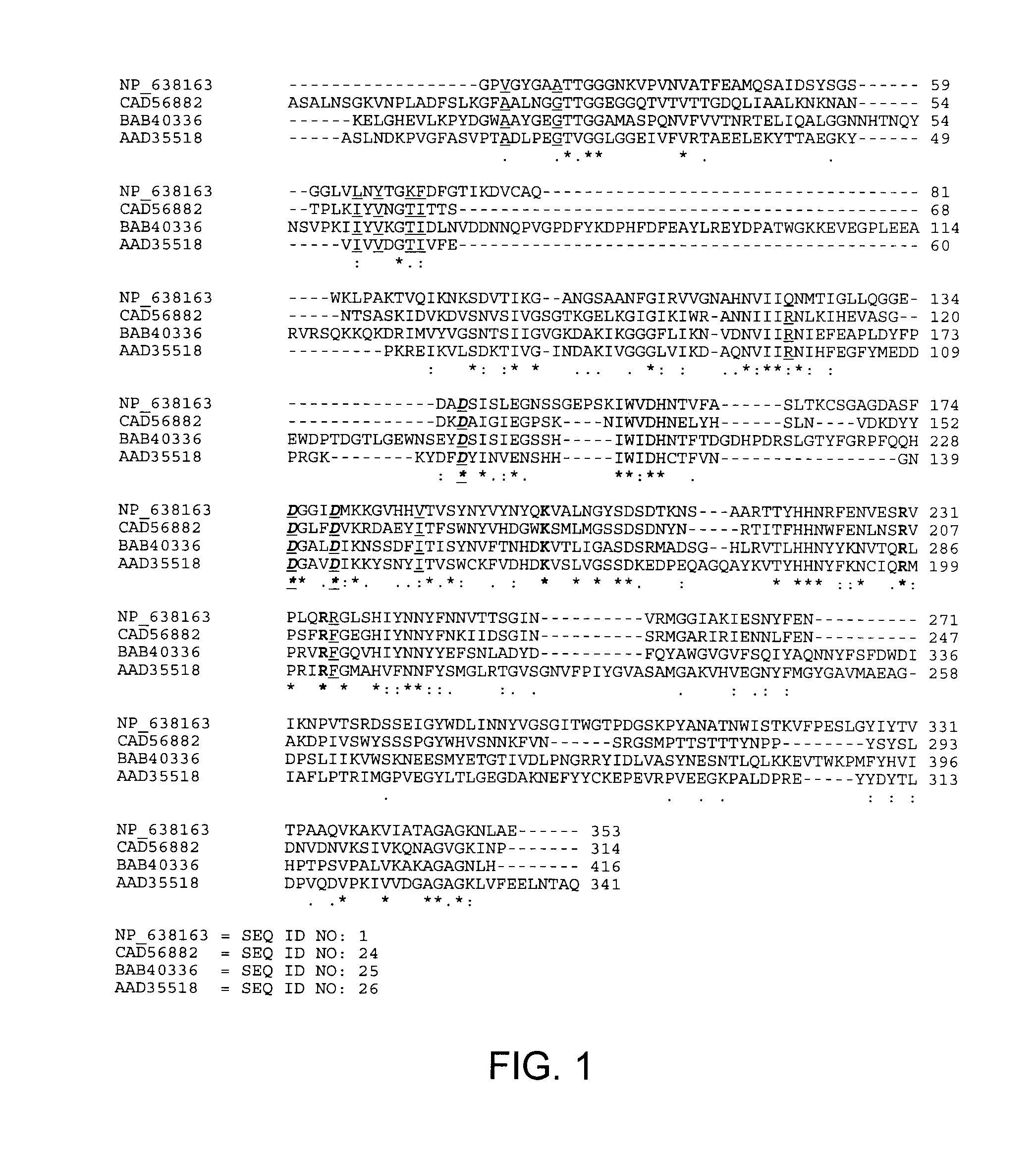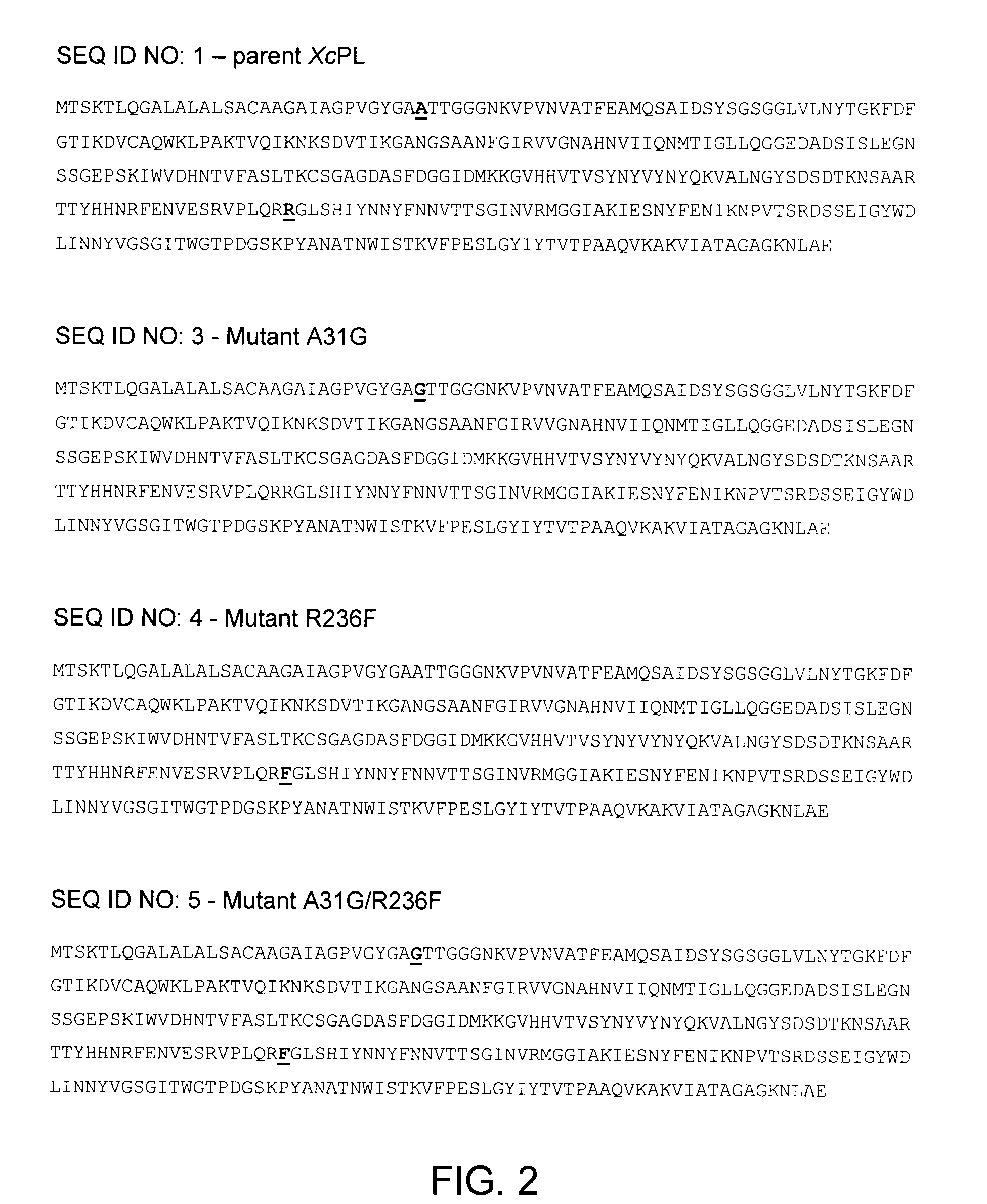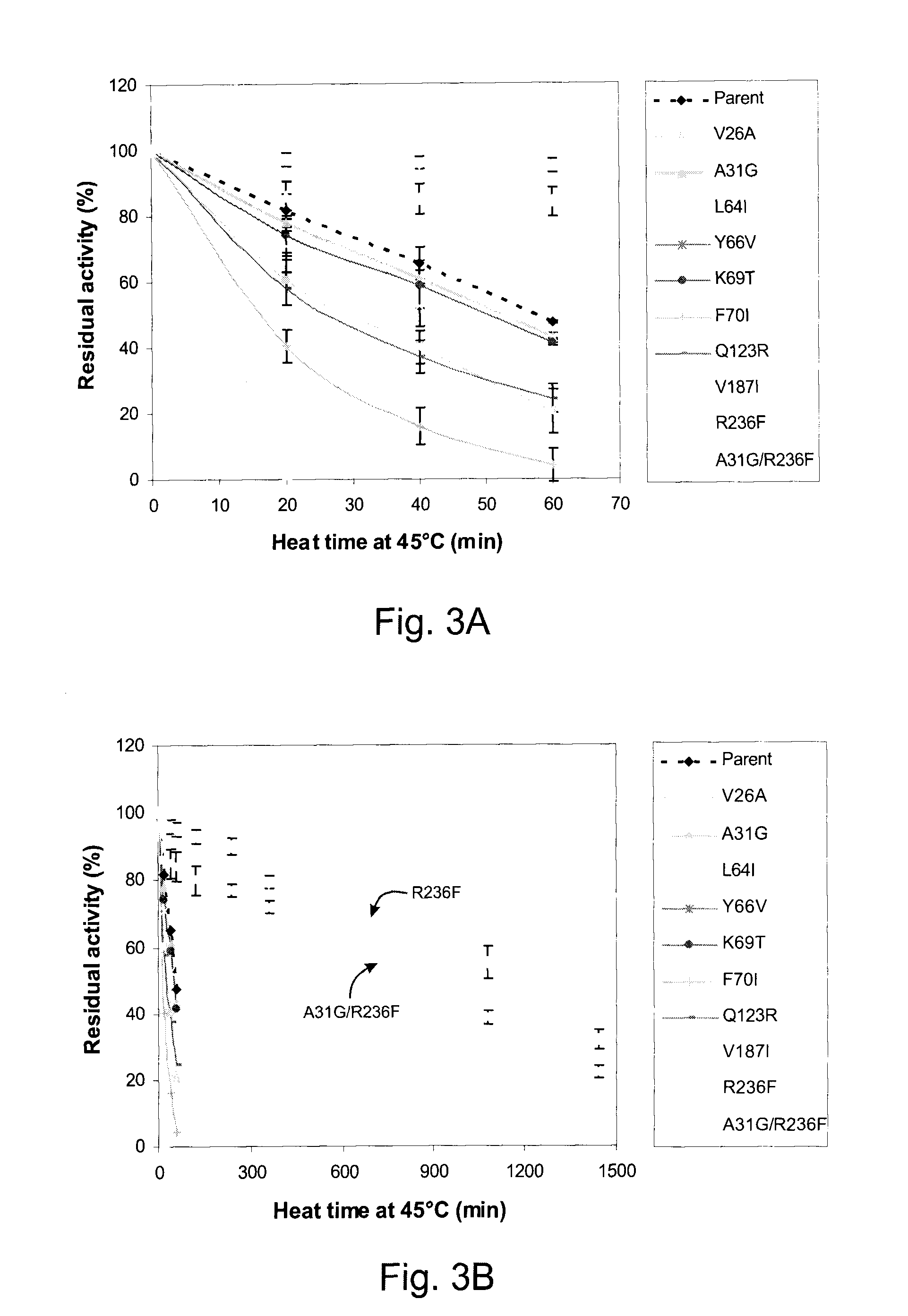Pectate lyases with increased thermostability and/or enzymatic activity
a technology of lyase and thermostability, applied in the field of pectate lyase, can solve the problems of polluting the water of the process, no guaranty of favorable conditions, and affecting the dew-retting, etc., and achieve the effect of improving thermostability and enzymatic activity
- Summary
- Abstract
- Description
- Claims
- Application Information
AI Technical Summary
Benefits of technology
Problems solved by technology
Method used
Image
Examples
example 1
Characterization of the Properties of Xanthomonas campestris Pectate Lyase II (XcPL)
[0043]The full-length XcPL gene encodes a polypeptide having 353 amino acids, with a molecular weight of 37 kD and pl of 8.7 according to its DNA-predicted amino acid sequences. Optimal pH and temperature of the enzyme were found to be 8.5 and 50° C., respectively. Melting temperature of this enzyme was determined to be 48° C. Half-life of inactivation at 45° C. for this enzyme was determined to be 54 min.
example 2
Selecting Mutations on the XcPL Polypeptide
[0044]Three thermostable pectate lyases, which have been biochemically characterized: CAD56882 from Bacillus licheniformis, BAB40336 from Bacillus sp. TS-47, AAD35518 from Thermotoga maritima MSB8 and thermoliable XcPL (NP—638163) were analyzed by multiple sequence alignment using ClustalW program. Compared with XcPL pairwisely, the thermostable pectate lyases share only 25-35% of identical amino acids. Interestingly, 9 amino acid residues in underlined font without bolding in FIG. 1 (corresponding to positions 26, 31, 64, 66, 69, 70, 123, 187 and 236 of the wild-type XcPL (NP—638163)) were found to be highly conserved in all three thermostable pectate lyases, but variable in the thermoliable XcPL (FIG. 1). Residues in bold font without underlining in FIG. 1 are conserved catalytic sites, residues in underlined bold italic font in FIG. 1 are conserved calcium binding sites, the gray shaded region in FIG. 1 is the core structure of the paral...
example 3
Effect of Single Amino Acid Substitution and a Double Mutation on the Thermostability of XcPL
[0045]Individual effects of amino acid substitutions in an enzyme are generally difficult to predict. Enzyme properties may be unaffected, adversely affected or positively affected. To determine the individual effect of each of the conserved amino acids in thermostable pectate lyases on the thermostability of XcPL, nine mutants of the Xanthomonas campestris pectate lyase II enzyme were produced, each containing a single substitution with conserved amino acid at a position corresponding to one of the nine sequence differences between the three thermostable pectate lyases and the thermoliable one.
[0046]Referring to Tables 1 and 2, in the name of each mutant the number refers to the amino acid position in the parent enzyme, the first letter refers to the amino acid present at that position in the parent and the second letter refers to the amino acid present at that position in the mutant.
TABLE ...
PUM
| Property | Measurement | Unit |
|---|---|---|
| Temperature | aaaaa | aaaaa |
| Temperature | aaaaa | aaaaa |
| Temperature | aaaaa | aaaaa |
Abstract
Description
Claims
Application Information
 Login to View More
Login to View More - R&D
- Intellectual Property
- Life Sciences
- Materials
- Tech Scout
- Unparalleled Data Quality
- Higher Quality Content
- 60% Fewer Hallucinations
Browse by: Latest US Patents, China's latest patents, Technical Efficacy Thesaurus, Application Domain, Technology Topic, Popular Technical Reports.
© 2025 PatSnap. All rights reserved.Legal|Privacy policy|Modern Slavery Act Transparency Statement|Sitemap|About US| Contact US: help@patsnap.com



